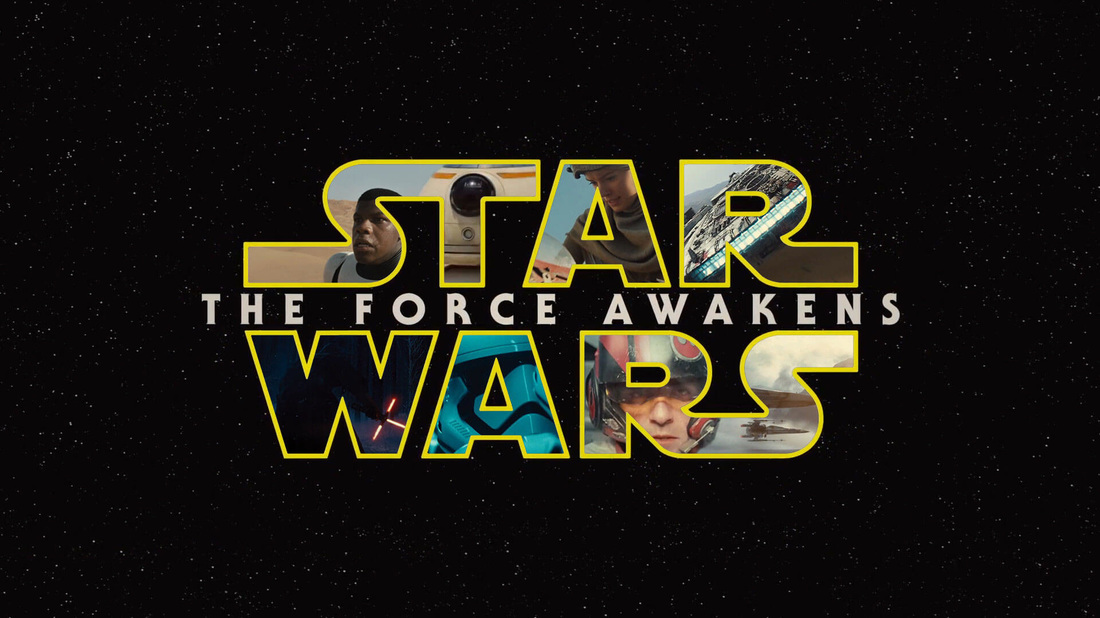Star Wars Episode VII: The Force Awakens [2015] is an event in pop culture history. As writer Elan Mastai said, Hollywood doesn’t often tell stories with film as much as it tells stories with marketing, of which the film is the climax. Here we can see the story that the Walt Disney Company is telling: one of a geek phenomenon that has permeated into all cliques, which had risen into glory and fallen with hubris, and is now ready to rise again in redemption—Joseph Campbell would be proud. Star Wars is its own Star Warscharacter. The climactic ascent that finishes this narrative is brought to us by J.J. Abrams, co-writing with Lawrence Kasdan from an initial draft by Michael Arndt. Don’t worry, it’s good.
You don’t know anything about me. Well, we do and we don’t. John Boyega, the most overwhelmingly English actor since Laurence Olivier, rocks an American accent so seamless that it almost forgives colonialism. He plays Finn, an adorably earnest up-and-comer who will likely have no problem becoming iconic in a few decades. At Boyega’s side is Daisy Ridley, who had only slightly more acting experience than I did when she earned the role as the scrappy and heroic scavenger Rey, who is without question the soul of the movie. Neither of these characters are given surnames, although they could both belong to the “Jung” family for all the ease and grace with which they are slipping into the collective unconscious. Topping off this new trio is Oscar Isaac, desirable to any orientation, as the cocky independent hotshot pilot Poe Dameron (who is actually not that much like Han Solo at all!).
I will finish what you started. The MacGuffin, the villain, the mentor, the family drama… this is not new ground. And the desert, the snow, and the forest… that’s literally not new ground. But what forgives all these rehashes is the film’s integrity, its human honesty, and its rapidly beating heart. It may be the same old story dynamic, but these are brand new people living through it! Antagonist Kylo Ren (Adam Driver’s fascinating performance—which some people will misunderstand, and have already misunderstood— would have been gripping even on an empty stage with no props, much less on the gorgeous sets of Rick Carterand Darren Gilford) is not only a callback to eighties villain Darth Vader, but he’s an explicit result of Vader’s actions and reputation, which is a wonderful example of how the film justifies its (significantly) heavy homages and makes them thematically relevant.
I know everything about waiting. It’s fast, but it’s clear: editors Mary Jo Markey and Maryann Brandon let Dan Mindel’s focused cinematography breathe, and even as their contents propel themselves ferociously forward, no scene is ever afraid to linger for a few frames and let the audience soak in the detail. No composition is ever thrown in as a filler between a master and a close-up. No shot feels like standard procedure. In one scene, the steadfast hero Finn leans in close to another character for a small monologue so tightly written that it’s more like a single long line: Boyega’s intense face fills up the frame for the entire delivery, never to be cut away from or shifted in position, so every contour of his richly emotional face is presented unflinchingly for all viewers to soak in.
Oh, by the way… This film contains a single scene that is one of the most effective pieces of cinema I have ever watched. It is haunting in its speechless magic and power. Just one scene, maybe two minutes long.
Impressive… most impressive.

